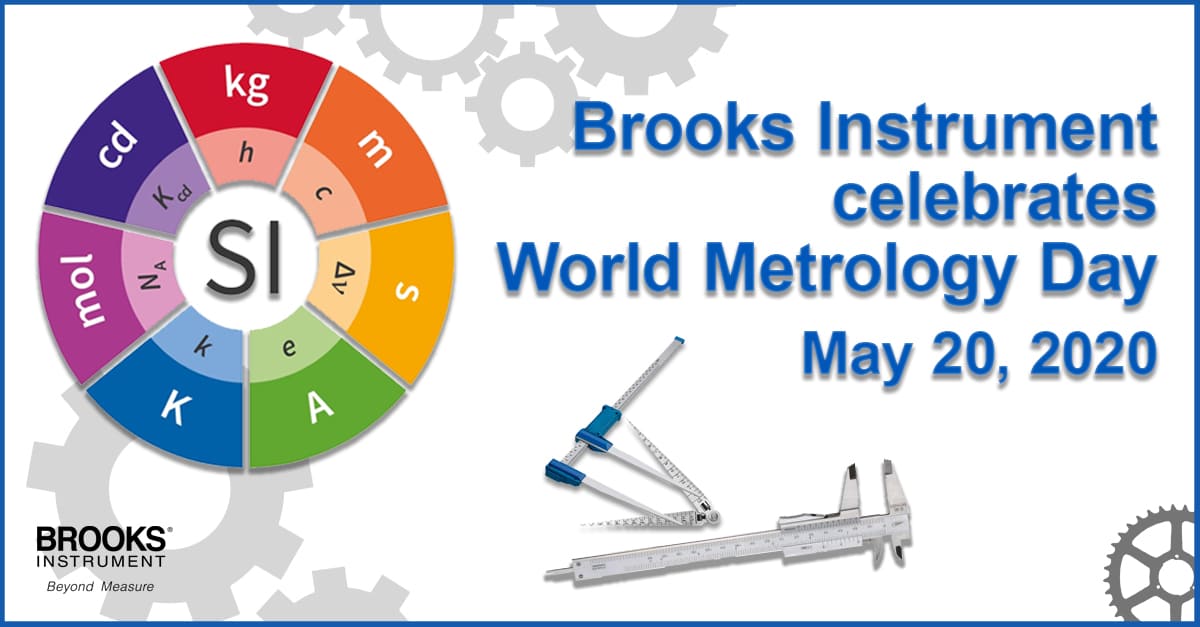Editor's Note: You may have missed this post when it was originally published in 2019. With some minor updates, we hope you find it of value again this year.
World Metrology Day, an annual event during which more than 80 countries celebrate the impact of measurement on our daily lives, is today, May 20th.

This date was chosen in recognition of the signing of the Metre Convention on 20 May 1875, the beginning of formal international collaboration in metrology. Each year World Metrology Day is organized and celebrated jointly by the International Bureau of Weights and Measures (BIPM) and the International Organization of Legal Metrology (OIML) with the participation of the national organizations responsible for metrology. Let’s explore some more about metrology and learn what its role is in the world of flow control and instrumentation.
What is Metrology?
But what about metrology makes it worthy of its own day? What exactly is it, practically speaking? Metrology, very basically, speaks to the scientific study of measurement. It provides a means of accountability and certainty by combining the theoretical and the practical use of the science of measurement. It means no mater where we are in the world, we can compare the results of measurements no matter where they are made.
Using and maintaining this system of measurement and accountability, metrology, is especially important in industries where industrial process control is being done. This includes the chemical, biopharmaceutical, semiconductor, and food & beverage industries, among others.
Suppliers and users of process control instrumentation often have their own internal metrology labs, systems, processes, equipment and human resources to calibrate and maintain the process instrumentation. Maintaining this metrology capability takes a significant and ongoing investment in equipment and resources and may not make sense in all situations. Where it does not make sense to maintain in house metrology systems, the metrology can be outsourced to a third party and/or the original equipment manufacturer. In any case, the process control instrumentation gets its performance calibrated to and checked against a reference standard that is typically maintained tracible to one or more international standards.
The Metrology Lab
Depending on the extent of the metrology to be done, a metrology lab will have just a few pieces of equipment or several hundred. This equipment might include devices to measure length, weight, time, pressure, temperature, flow or other physical parameters. In addition to the measurement equipment, a metrology lab needs to have trained personnel knowledgeable in not only the use of the metrology equipment but also knowledgeable in the set up and test of the various process instrumentation who’s performance needs to be checked.
When using a process instrument like a flow meter, pressure transducer or some other instrument, the accuracy of that device is only as good as the calibration systems and metrology systems that stand behind it. Are the calibration and metrology systems maintained tracible to one or more international standards? Is the uncertainty of the system being used to test or calibrate understood? Having in house metrology requires a level of knowledge and understanding regarding measurement systems and accuracy that permeates the entire organization allowing the organization to better communicate with and service customer’s needs.
Brooks maintains an in-house metrology capability that allows us to check and calibrate the more than 3000 assets / pieces of measurement equipment that are used throughout our manufacturing and engineering test labs. With this in-house metrology capability, we are able to verify performance of a given asset with minimal down time and the assurance that the verification process is being done properly. There are a few situations where we don’t have the capability in house, and in these cases, we will use a third party or go back to the original equipment manufacturer.
Behind the Scenes
The Metrology Lab personnel assist in the establishment and maintenance of calibration systems and validate the accuracy of the measuring and test equipment. This assures that products are in conformance with all prescribed technical requirements relating to Flow Instrumentation and Controls.
Brooks employs several types of reference standards. An appropriate reference standard is selected to achieve the highest accuracy possible for each of our product lines. Brooks’ Metrology Laboratory maintains and tracks all reference and working standards that are used in the calibration and verification of the products. It is important that our working and reference standards are traceable to International Standards Institutions, such as National Institute of Standards & Technology (NIST, USA) and VSL (Dutch Metrology Institute).
Several types of flow standards are used to calibrate the flow measuring products that we provide to our customers: Rate of Rise (ROR), Volume Meters, and Laminar Flow Elements. The working standards are routinely cross checked and validated to the International Standards to ensure that their accuracies meet our requirements.
Servicing Your Device
Brooks Instrument not only employs our extensive metrology knowledge and capabilities in the production of flow and pressure instrumentation, but also in the servicing of that instrumentation. If you have a metrology need and don’t have the in-house capability, you can return your device to Brooks. We have service locations around the world with a wide range of service offerings from a simple calibration verification (as found) to full repair with factory original parts and recalibration. In addition, Brooks has technical service engineers who are available for phone support and/or field service. In the field service capacity, this team supports installations, start-ups, troubleshooting, insitu tuning, calibration verifications and other support activities.
There are countless ways we utilize metrology in our daily lives – from weight, temperature, length, even time – most of the time, without realizing it. Imagine the chaos we would encounter in daily life if metrology was absent, with everyone using different standards of measurement! We can thank metrology for the industrial and safety standards it has helped establish, and today, we appreciate the ongoing roll of instrumentation in matters of metrology.